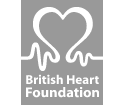At YoungMinds we deal with self-harm a lot. The ways we do it vary but they include: our Parents’ Helpline; our training courses for teachers; youth workers and service providers; our lobbying work with government officials and our work directly w...
Want to see the rest of this article?
Would you like to see the rest of this article and all the other benefits that Issues Online can provide with?
- Useful related articles
- Video and multimedia references
- Statistical information and reference material
- Glossary of terms
- Key Facts and figures
- Related assignments
- Resource material and websites

 Talking self-harm
Talking self-harm








